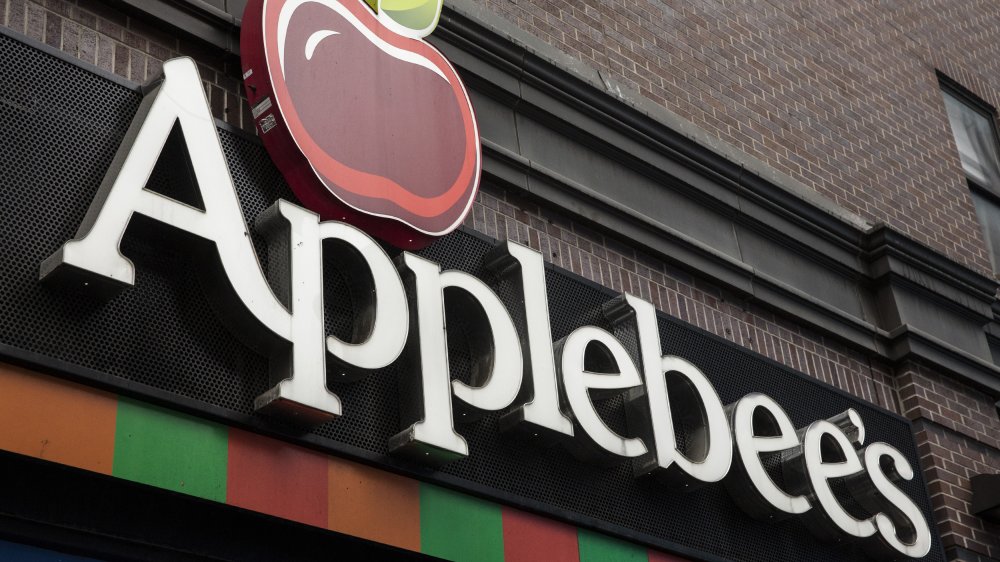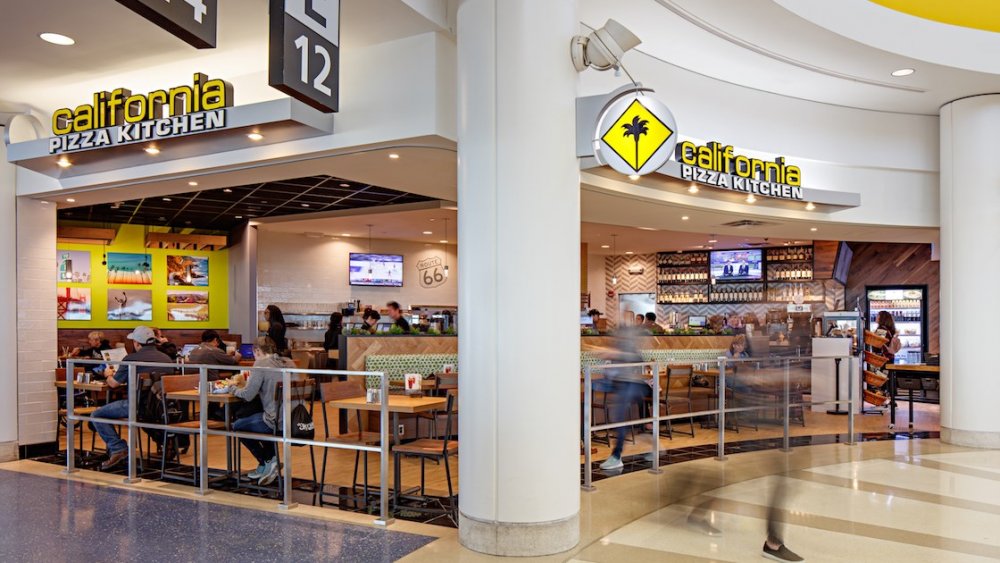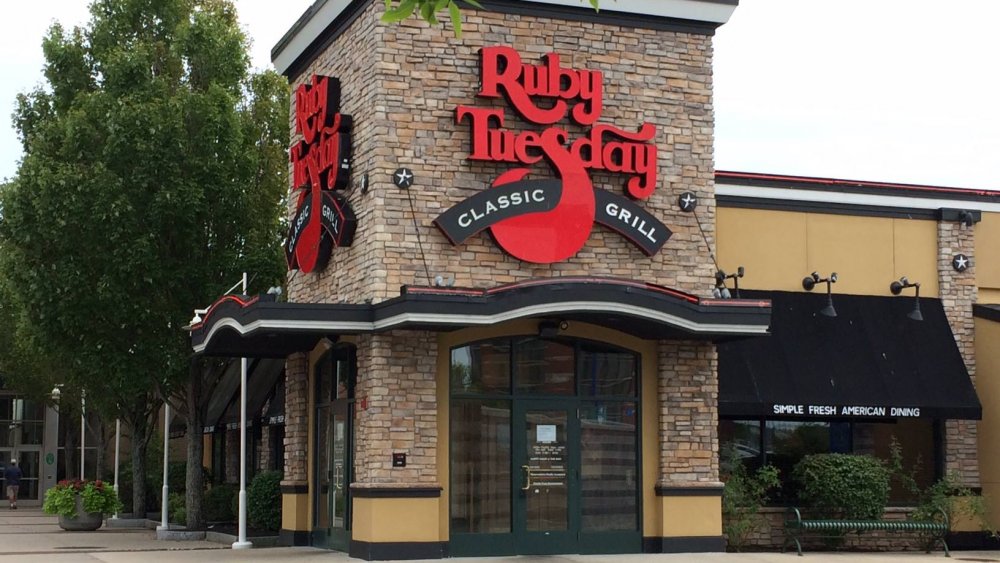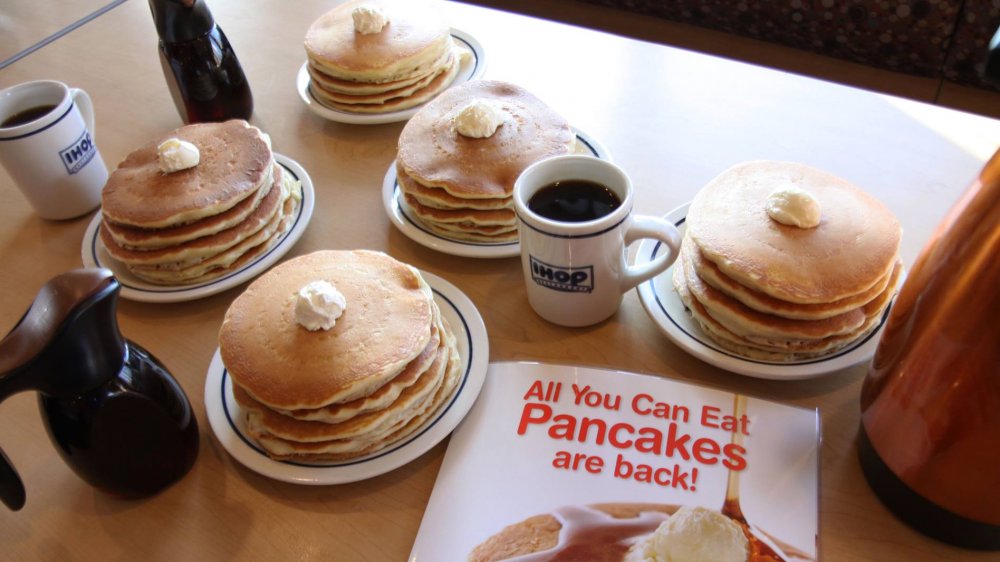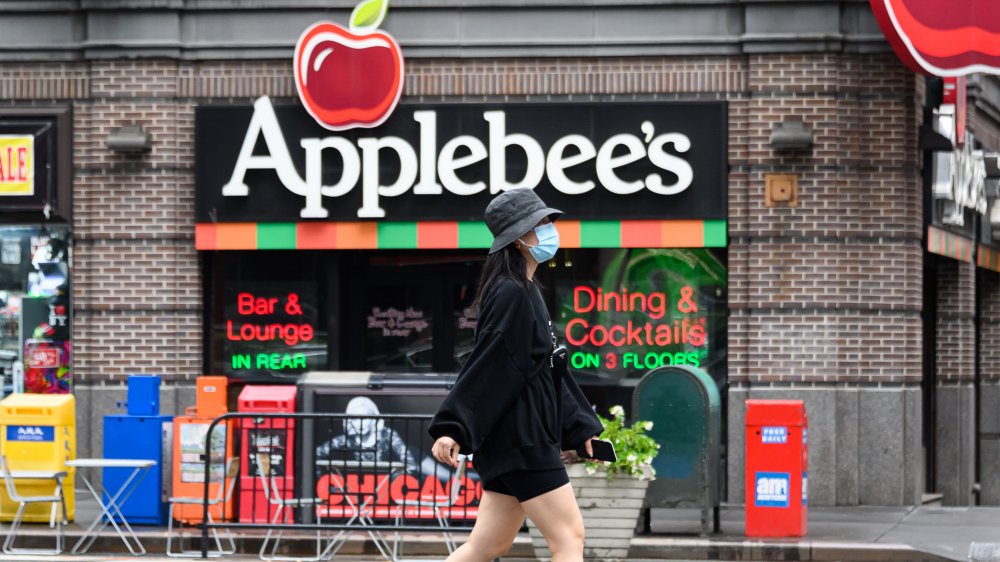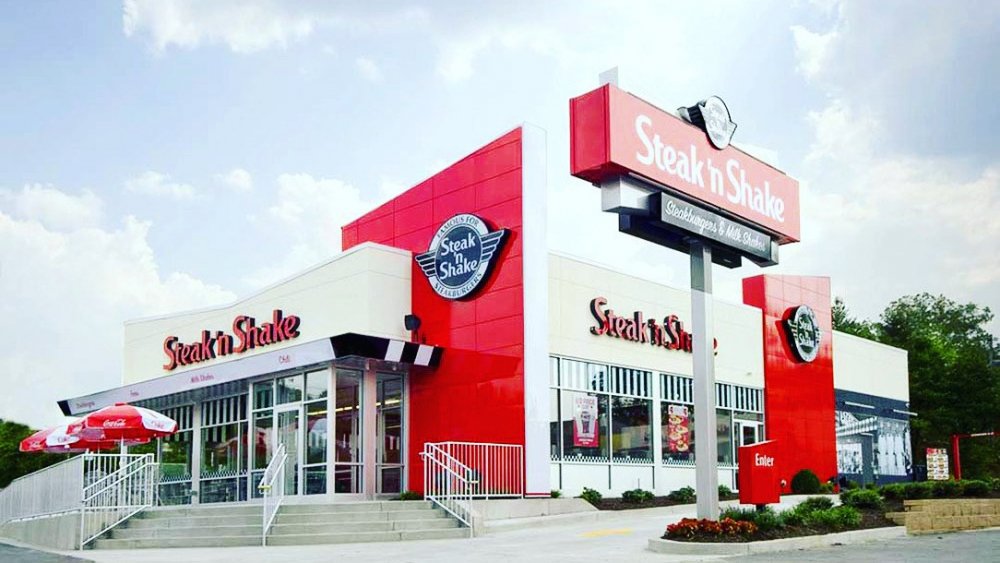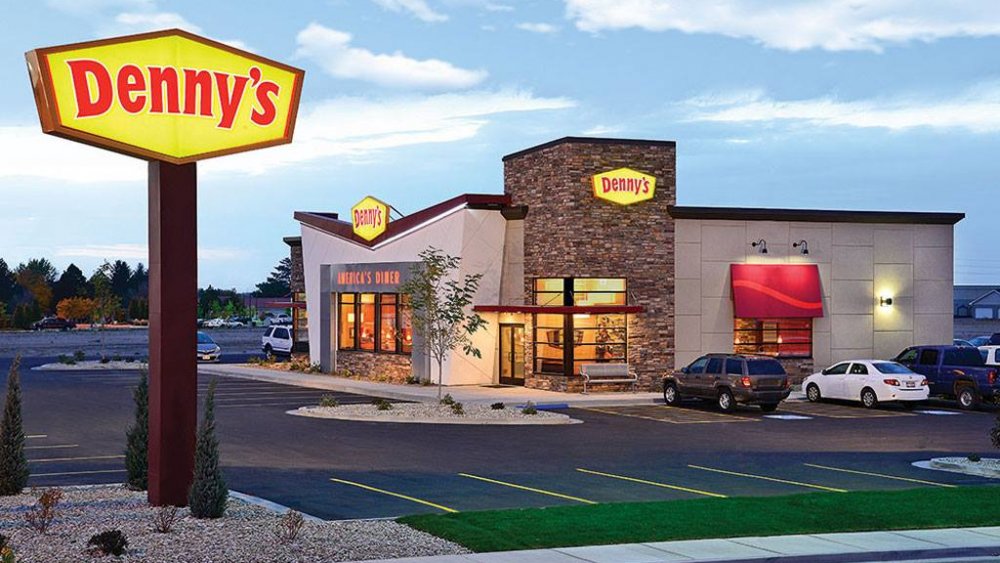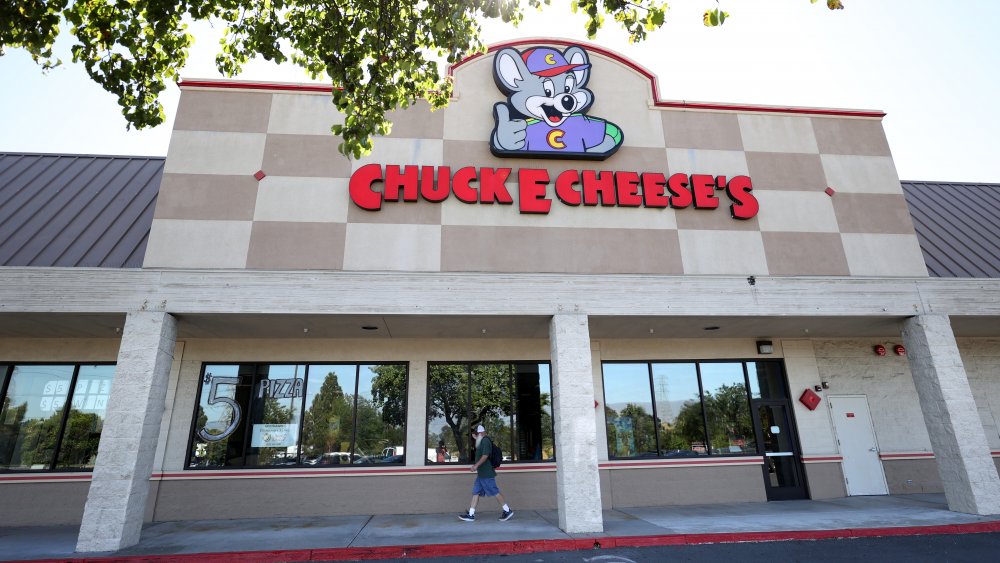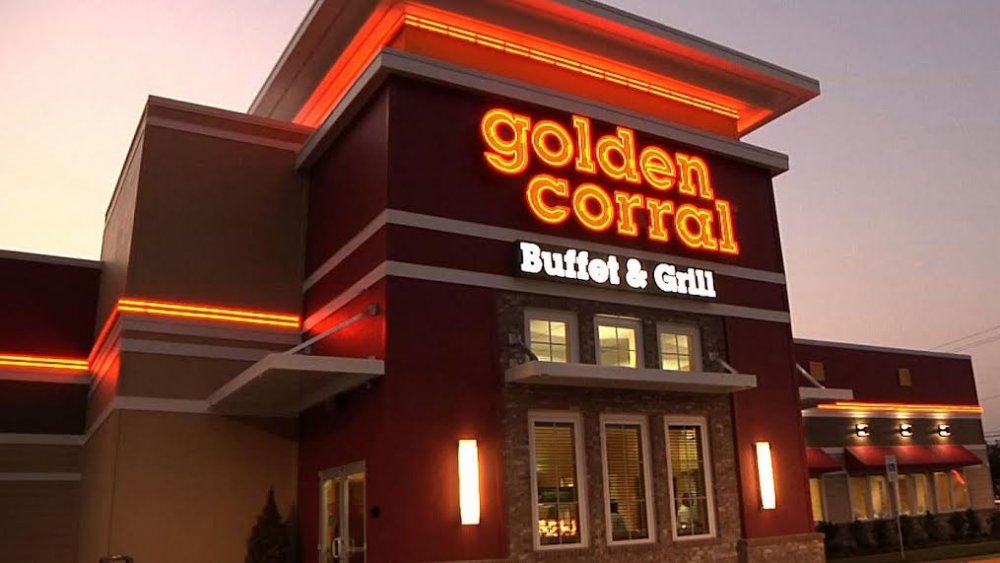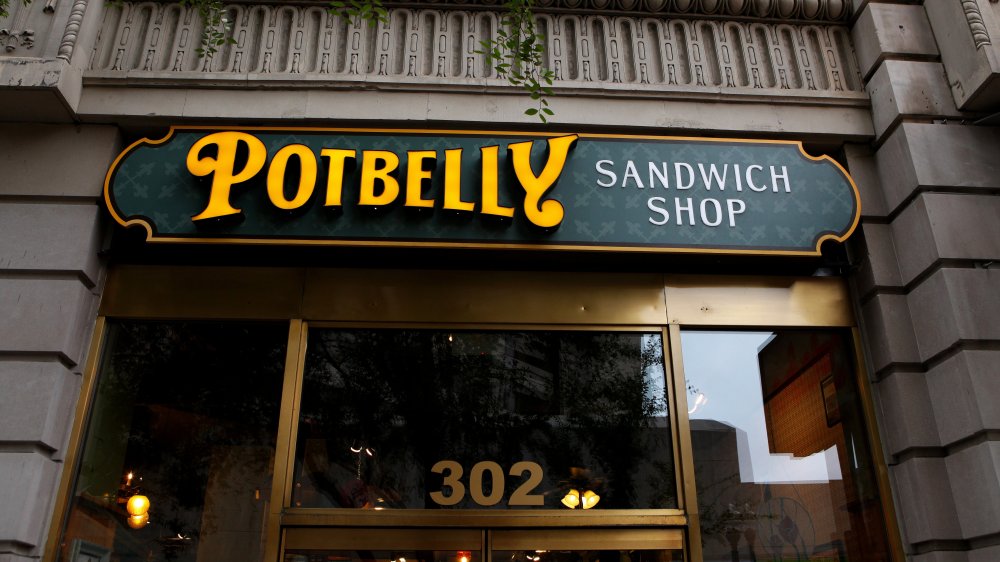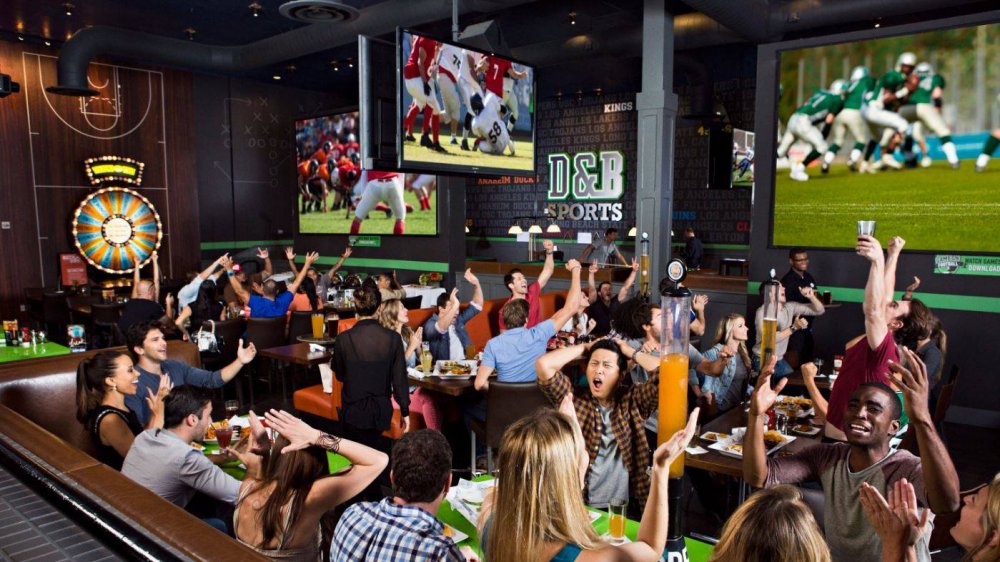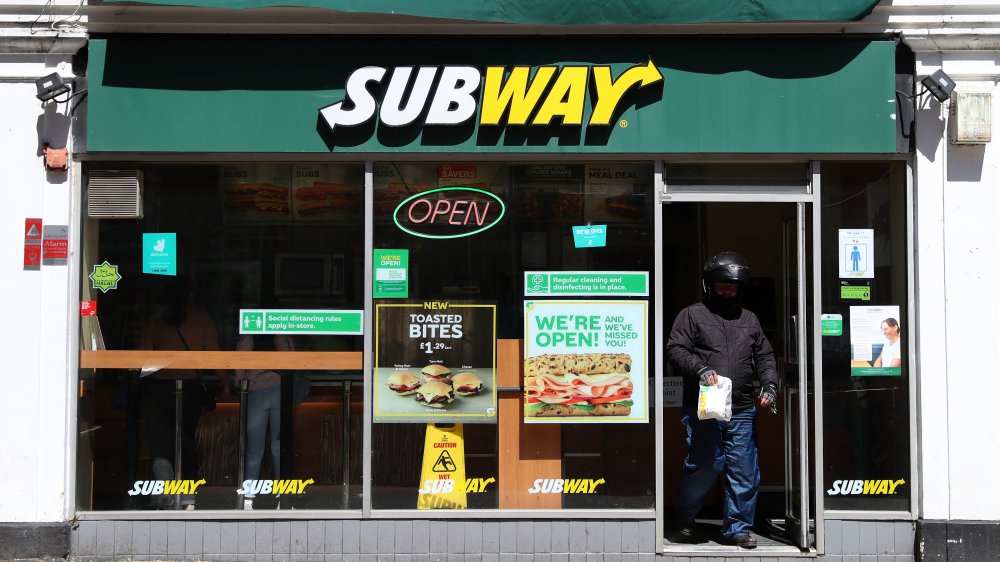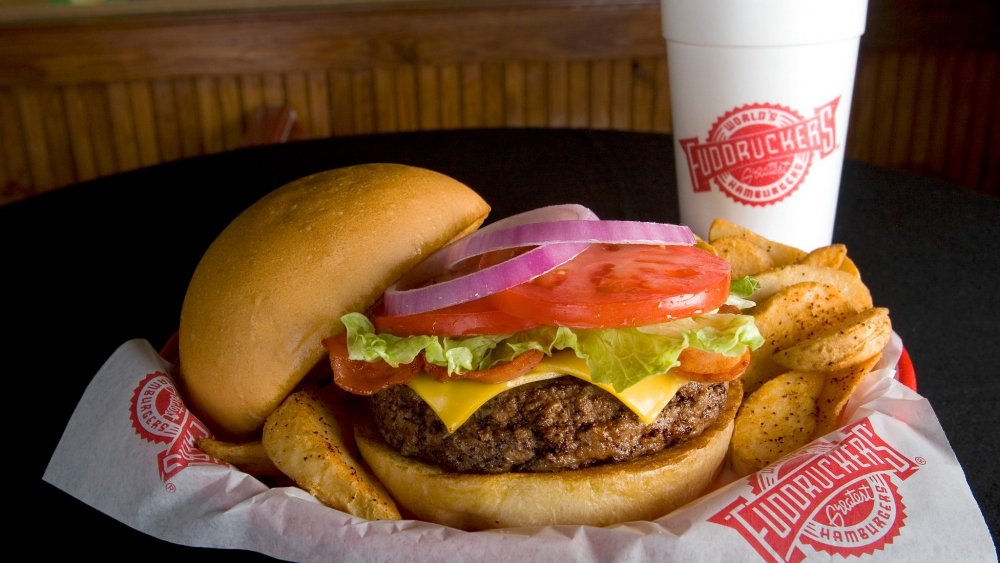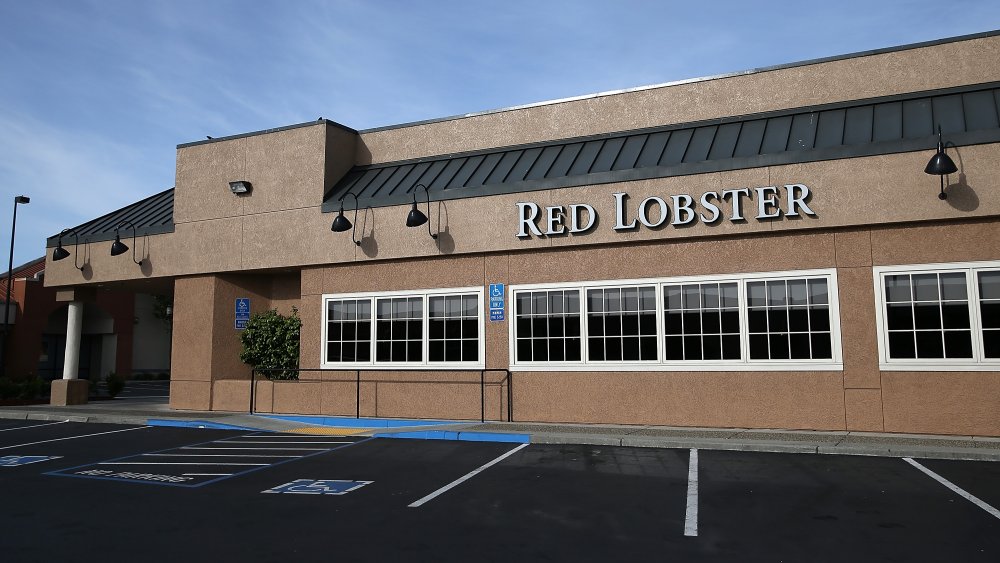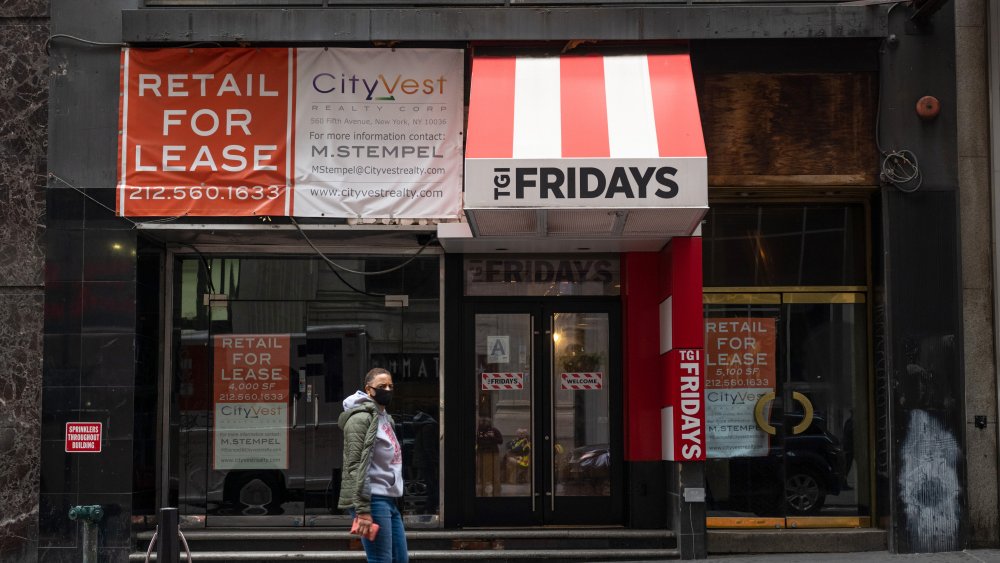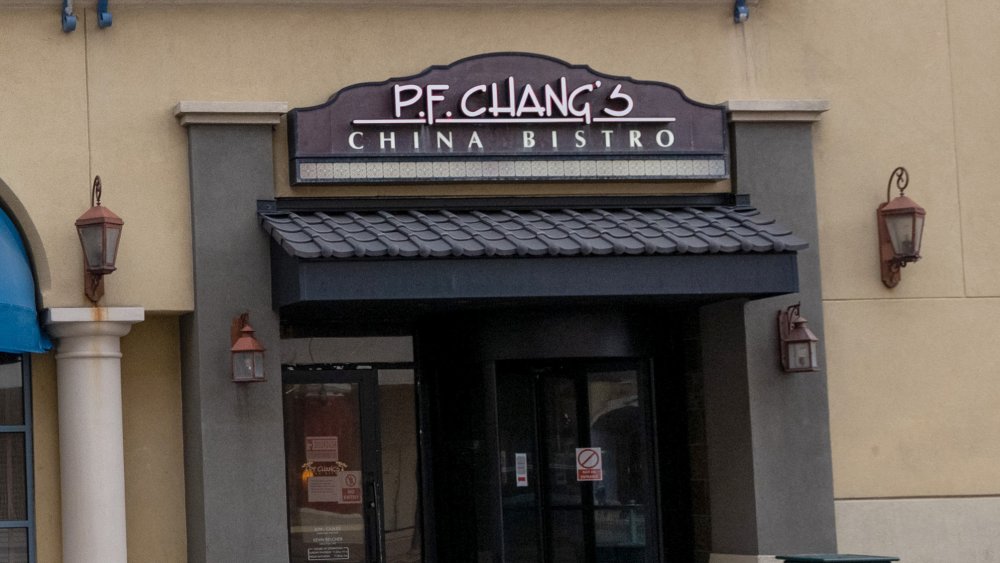Beloved Restaurant Chains We Might Sadly Lose In 2021
Very few industries have been hit harder by the coronavirus pandemic than the restaurant business. And even within this line of work, one segment had it the worst: casual dining chains. Restaurants with limited capacity coupled with no delivery or takeout options were left scrambling.
But while every restaurant has suffered because of the events of 2020, some of them began struggling years ago. This is an ominous sign and puts their chances of bouncing back when the rest of the world returns to normalcy very low.
Unfortunately, many of these aforementioned struggling eateries are chain restaurants we've come to know and love over a lifetime of dining there. While you may still see some of these chain restaurants in the future, odds are almost certain that there will be fewer of them. From iconic pancake chains to famous "eatertainment" venues, these are some of the beloved restaurant chains we might lose in 2021.
California Pizza Kitchen
Most struggling restaurant chains are doing their best just to stay out of bankruptcy. Unfortunately for California Pizza Kitchen, it's already there.
In large part, fast food and fast-casual pizza chains have been able to get by due to their substantial delivery business. California Pizza Kitchen, however, has historically been centered on a sit-down model. As part of its bankruptcy agreement, the pizza chain will be forced to close its unprofitable locations. Time will tell just how many that will be. But even before this announcement, locations had begun closing for good, including spots in Texas, Alabama, and Georgia.
Although the company's CEO stated that California Pizza Kitchen will "quickly emerge" from this setback, it appears that task will be easier said than done. The business has some $400 million in debt but just a fraction of that on hand. It's also been burdened with months of unpaid rent at a majority of its locations.
Ruby Tuesday
Like nearly every other restaurant chain in the country, Ruby Tuesday was hit hard by the pandemic. But the chain cannot point to the incredibly unusual circumstances of 2020 as the cause of their demise. Truth is, it's been trending downward for years.
Ten years ago, Ruby Tuesday had nearly 850 locations. When it was purchased by NRD Capital in 2017, it had roughly half that. And they've been closing restaurants ever since. Now, the number sits between 270 and 300.
If anything, the pandemic only sped up Ruby Tuesday's decline. About 150 locations closed at least temporarily, and the final number of permanent closures is still to be determined. This all led to the company filing for bankruptcy in October. Although it will still be in operation during this time, the managing partner of its parent company admits that Ruby Tuesday likely will not fully bounce back. "I don't think it goes back to 100 percent in the near-term," he said. "The ability to pay rent at full capacity remains very doubtful."
IHOP
We may have to start looking for a new favorite pancake joint. After more than 60 years in business, IHOP is facing a troubling future. While many chain restaurants have struggled this year, IHOP and the rest of the breakfast segment have been hit particularly hard. The takeout and delivery options that have helped keep other eateries afloat during the pandemic have not caught on in the breakfast market.
In August, a report published by S&P Global Market Intelligence estimated that the company had an 11.3 percent chance of defaulting on its loans. Things haven't gotten better since then. In October, IHOP's parent company, Dine Brands Global, announced the famous breakfast chain would be closing up to 99 locations over the next six months. This all comes on the heels of other significant troubling events for the chain. It closed down 16 other restaurant locations in the third quarter of 2020 as sales dropped by 30 percent. Prior to that, a franchisee owning 49 IHOPs filed for bankruptcy back in May.
Applebee's
In the same breath as IHOP's announcement came the news that Applebee's would be closing locations permanently as well. (The same company, Dine Brands, owns both restaurant chains.) Applebee's said it would close 15 restaurants during the final quarter of 2020 after having closed 20 stores for good the previous few months.
Applebee's troubles go back years. It closed nearly 100 stores for good in 2017 and dozens more in 2018. The chain has had a difficult time attracting millennials and its attempt to rebrand itself as an upscale dining option fell flat on its face — and cost the company millions of dollars.
To add insult to injury, executives at the company seemed to think they were above the pandemic fray. Over the summer, CEO Steve Joyce, said, "There is no question, we will close some restaurants. But we don't think the number is going to be a big number." In fact, Applebee's believed that this time might be beneficial. Speaking of the gap in the market that could arise from the closings of independent restaurants, Applebee's president John Cywinski stated the situation, "stands out in terms of opportunity."
Steak 'n Shake
Steak 'n Shake has been around for the better part of a century, but entering 2021, its days seem numbered.
The restaurant chain known for its "steakburgers" and milkshakes is another outlet whose problems began prior to coronavirus. Steak 'n Shake began closing stores a few years ago. Since the end of 2018, it had permanently closed more than 70 locations. According to Restaurant Business Online, the chain's sales dropped at least five percent each quarter since the middle of 2018.
As of May 2018, the company had a nearly $160 million loan still outstanding. Moody's Investors Service and S&P Global downgraded its credit rating and predicted the chain "will face extreme challenges" trying to refinance. The brand has been trying to find new ways to improve its finances, namely switching to a franchising business model. But even that idea seems to be shaky at best.
Exactly how bad is the situation at Steak 'n Shake? Its parent company's CEO has resorted to the idea of cutting out the signature cherries that have adorned the top of the chain's milkshakes for eight decades. He believes it will save $1 million a year.
Denny's
IHOP isn't the only breakfast restaurant chain with a gloomy outlook — the Grand Slam Breakfast could be going, going, gone.
In March, Denny's closed 15 locations in New York alone. At the time, executives said that they would not be surprised if more restaurants had to close down.
According to Restaurant Business Online, Denny's has had trouble fully staffing the late and overnight shifts at its 1,000-plus stores. Around 70 percent of units have failed to return to all-hours dining since the coronavirus pandemic began. Staff members may be concerned about how much money they will be able to make during off-hours, potentially making them wonder whether it's worth their time. In addition, limited-reopening capacities have only dug profits deeper into the ground.
To add insult to injury, Denny's was doing very well as recently as last year. The company's income tripled in the second quarter of 2019, with same-store sales rising nearly 4 percent overall.
Chuck E. Cheese's
This past summer, famous "eatertainment" restaurant chain outlet Chuck E. Cheese broke the chain restaurant bankruptcy dam when it filed for Chapter 11 protection. With more than 600 locations, it was the largest restaurant company to do so in the wake of the coronavirus pandemic. (Chuck E. Cheese's parent company, CEC Entertainment, also owns 120 Peter Piper restaurants.) The company announced the closing of more than 30 locations across the country, including several in California, Florida, Massachusetts, and Ohio.
In the filing, CEC Chief Financial Officer James Howell said, "In ordinary times, the company would be financially sound." But while many restaurants can point to the pandemic as the source of its ills, Chuck E. Cheese's problems started long before that. The company has a whopping $1 billion in debt, most of which accumulated back in 2014 when Apollo Global Management, CEC Entertainment's owners, purchased the restaurant.
Although you may not see the brick-and-mortar Chuck E. Cheese's much longer, the brand could stick around. The chain currently has about 450 stores operating as carryout and delivery only. It's also committed to offering at-home birthday packages. These would include games, online components, goodie bags, tickets for future game play, branded tableware, and photo backdrops.
Golden Corral
Few, if any, restaurant chains were prepared for the coronavirus pandemic. But some have been able to transition effectively. Golden Corral is not one of those restaurants.
The chain was particularly hard hit by the crisis because of its buffet business model. This style of service includes communal spaces where all guests gather, as well as shared serving utensils. These practices are conducive to the spread of germs and have been all but eliminated across the country. Some other buffet-style restaurants have switched to a cafeteria model where employees serve the customers, but Golden Corral's buildings simply aren't structured to provide that service.
In October, Golden Corral's largest franchisee filed for Chapter 11 bankruptcy protection. The company owns 33 locations in Florida and Georgia, all of which closed in March. As of October, six have reopened, and plans include opening 18 more by the end of the year. But it appears that will be it. Golden Corral Corp. said it only anticipates 24 of the 33 to continue to operate. "Recovery has been steady, but slow," said CEO Lance Trenary. "Some franchisees will not be able to continue to operate without additional financial relief."
Potbelly
In May, Potbelly restaurant chain announced that it planned to permanently close up to 100 locations, roughly one-quarter of its total company-owned restaurants. It then hired a restructuring consultant and bankruptcy attorney to help sort out the mess.
It appears these steps worked to some degree. In August, the Chicago-based chain updated its estimates, saying it now expected to close fewer than 50 restaurants. This came as it confirmed closing 16 locations, however.
One tough sticking point for the company is its lease agreements. It operates many locations within cities, where rent is much higher. In turn, Potbelly reportedly has accumulated more than $200 million in owed lease payment. To ease this burden, the chain applied for and received a $10 million Paycheck Protection Program loan. It returned the loan, however, after a public uproar over publicly traded companies receiving financial assistance.
Ultimately, Potbelly will need help from its landlords or be forced into bankruptcy in order to get out of its lease agreements. Either way could likely spell the end for many of its restaurants.
Dave & Buster's
According to the experts, Dave & Buster's has a 16 percent chance of being unable to repay its loans in 2021. If that happens, the chain will likely be forced to file bankruptcy, close locations, or both.
The prediction comes from S&P Global Market Intelligence, which ranked the entertainment outlet as the most likely to default on its loans amongst the largest publicly traded restaurant chains in the country.
There is some silver lining in Dave & Buster's situation. Just a few months earlier, its odds of not being able to pay its loans were north of 50 percent. In addition, S&P believes that many competing "eatertainment" concepts will struggle to stay open, thus leaving an opportunity Dave & Buster's to gain market share.
Still, it appears to be tough going in the future for the food-and-game chain. In September, its stock dropped 26 percent in one day as rumors of bankruptcy swirled. That same week, it was reported that the company would be laying off more than 1,300 workers across seven states.
Subway
Of all the restaurant chains that have been struggling for years, Subway may just take the cake. After more than five decades in operation, its time appears to be running out.
The famous sandwich shop has been losing stores each year since 2017. In total, 13 percent of Subway restaurants in the United States have closed since 2015, including 2,000 in the past two years.
The chain has suffered from a host of self-inflicted wounds, not the least of which is a poor business model. For many years, the company was dead-set on opening as many restaurants as possible. But this only led to multiple Subway shops in the same vicinity eating away at each other's profits. Add in increased competition in both the sandwich and quick-service markets, and it spells trouble for the "Eat Fresh" brand.
Subway still has 41,600 locations in the world, so it may take some time for the restaurant to completely disappear. But if its downward trend continues, you may want to run and get that footlong while you still can.
Fuddruckers
The title of "world's greatest hamburger" may soon be awarded to a new restaurant chain.
Fuddruckers is owned by Luby's Inc., which also operates Luby's Cafeteria. In September, it announced its plan to liquidate and dissolve the company. As part of this, it would be selling its assets, including all of its restaurant locations.
It's possible that Fuddruckers could still exist in the future. According to the press release, its stockholders expressed support for continuing to operate the chain in its current form. But that will be up to its new owners, and judging by recent trends, it may not be likely. According to Business Insider, there were 57 locations at the start of 2019. But the company's most recent financial statement lists just 31 restaurants.
Fuddruckers opened in 1979. Fudpucker Airlines, a fictional company that has long been an inside joke in the aviation world, inspired its unique name. It looks like nobody with the restaurant is laughing anymore.
Red Lobster
Rumors of Red Lobster's demise go back to at least 2013. But what the chain is facing now is more than just speculation.
In March, Moody's Investor Service downgraded Red Lobster's credit rating to "poor quality and high credit risk." It defended its rationale by saying, in part, "prior to the impact of COVID-19, Red Lobster faced challenging operating trends, particularly traffic."
Then in August, the chain hired an advisory firm to help explore options moving forward. That same month, Red Lobster admitted that it would need to close some of its more than 700 restaurants, although it held out hope that mass shutdowns would not be needed. "Look, maybe we'll lose some locations if landlords are really not understanding enough. That's fine, too," said Joerg Ayrle, CFO of Red Lobster's parent company. "We need to keep the pressure on cost."
One looming problem for the famous seafood outlet is a $355 million loan that will come due in the summer of 2021. Repaying or refinancing that debt will be a tall order, as Red Lobster's CEO admitted that the restaurant is going through the "most challenging time" in its 52-year history.
TGI Fridays
Just a month and a half into 2020, before the pandemic hit the United States, TGI Fridays restaurant chain said it would close dozens of locations. This comes after closing 34 restaurants in 2019.
Just a few months later, as coronavirus wreaked havoc on the country and food industry, the company made it clear that about 20 percent of its locations would close for good. "Some will close forever, without a doubt," CEO Ray Blanchette said. "Right now it's all triage and it's all about cash: How are you going to make it through and keep the company solvent?" At the time, TGI Fridays had 386 restaurants across the country. A loss of 20 percent would mean closing 77 stores.
While all companies have been affected by the pandemic, it was particularly taxing on TGI Fridays' future plans. The chain's expected merger was canceled in April due to "extraordinary market conditions and the failure to meet necessary closing conditions." If it had gone through, this move would have led to the restaurant going public, which could have been a financial life preserver.
P.F. Chang's
In March, the popular Asian bistro restaurant chain P.F. Chang's had its credit rating downgraded, largely due to the impact of the coronavirus outbreak. But like so many others, P.F. Chang's was suffering from "already weak trends" prior to the pandemic. Founded in 1993 in Scottsdale, Arizona, the company was riddled in debt pre-2020. When new owners took over in 2019, the chain owed about $675 million.
One month after the credit downgrade, the chain permanently shuttered a location in New York, laying off more than 100 people, and then in May, did the same to a restaurant in Maryland. The most telling sign of P.F. Chang's troubles, however, occurred as recently as September. That's when the company announced it would be extending temporary layoffs of thousands of employees. Worse for the chain is the fact that it was unable to bring these workers back even though it received a multi-million dollar loan from the federal government.
